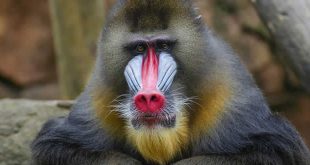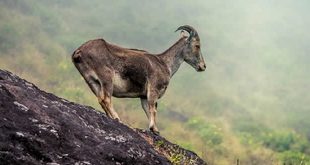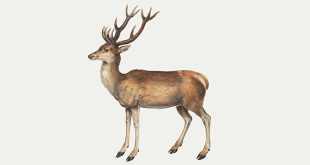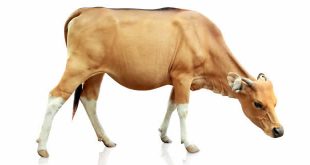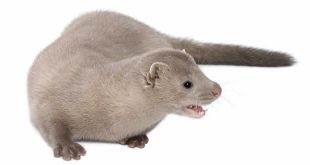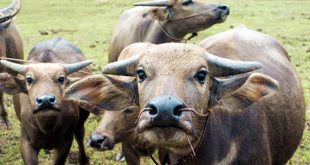 Kangaroo — A kangaroo is a marsupial from the family Macropodidae (macropods, meaning ‘large foot’). In common use the term is used to describe the largest species from this family, the Red Kangaroo, the Antilopine Kangaroo, and the Eastern and Western Grey Kangaroo of the Macropus genus. The family also includes many smaller species which include the wallabies, tree-kangaroos, wallaroos, pademelons and the Quokka, some 63 living species in all. Kangaroos are endemic to the continent of Australia, while the smaller macropods are found in Australia and New Guinea.
Kangaroo — A kangaroo is a marsupial from the family Macropodidae (macropods, meaning ‘large foot’). In common use the term is used to describe the largest species from this family, the Red Kangaroo, the Antilopine Kangaroo, and the Eastern and Western Grey Kangaroo of the Macropus genus. The family also includes many smaller species which include the wallabies, tree-kangaroos, wallaroos, pademelons and the Quokka, some 63 living species in all. Kangaroos are endemic to the continent of Australia, while the smaller macropods are found in Australia and New Guinea.
In general, larger kangaroos have adapted much better to changes wrought to the Australian landscape by humans and though many of their smaller cousins are endangered, they are plentiful. They are not farmed to any extent, but wild kangaroos are shot for meat, over which there is controversy.
The kangaroo is an Australian icon: it is featured on the Australian coat of arms, on some of its currency, and is used by many Australian organisations, including Qantas.
Europeans have long regarded kangaroos as strange animals. Early explorers described them as creatures that had heads like deer (without antlers), stood upright like men, and hopped like frogs. Combined with the two-headed appearance of a mother kangaroo, this led many back home to dismiss them as travellers’ tales for quite some time. The first kangaroo to be exhibited in the western world was an example shot by John Gore, an officer on Captain Cook’s Endeavour in 1770. The animal was shot and its skin and skull transported back to England whereupon it was stuffed (by taxidermists who had never seen the animal before) and displayed to the general public as a curiosity.
Kangaroos have large, powerful hind legs, large feet adapted for leaping, a long muscular tail for balance, and a small head. Like all marsupials, female kangaroos have a pouch called a marsupium in which joeys complete postnatal development.
Kangaroos are the only large animals to use hopping as a means of locomotion. The comfortable hopping speed for Red Kangaroo is about 20-25 km/h (13-16 mph), but speeds of up to 70 km/h (44 mph) can be attained, over short distances, while it can sustain a speed of 40 km/h (25 mph) for nearly two kilometres. This fast and energy-efficient method of travel has evolved because of the need to regularly cover large distances in search of food and water, rather than the need to escape predators.
Because of its long feet, it cannot walk correctly. To move at slow speeds, it uses its tail to form a tripod with its two forelimbs. It then raises its hind feet forward, in a form of locomotion called “crawl-walking.”
Different species of kangaroos eat different diets. Eastern grey kangaroos are predominantly grazers eating a wide variety of grasses whereas some other species (e.g. red kangaroos and swamp wallabies) include significant amounts of shrubs in the diet. The smaller species of kangaroos also consume hypogeal fungi. Many species are nocturnal and crepuscular, usually spending the days resting in shade and the cool evenings, nights and mornings moving about and feeding.
 Kids Portal For Parents India Kids Network
Kids Portal For Parents India Kids Network
